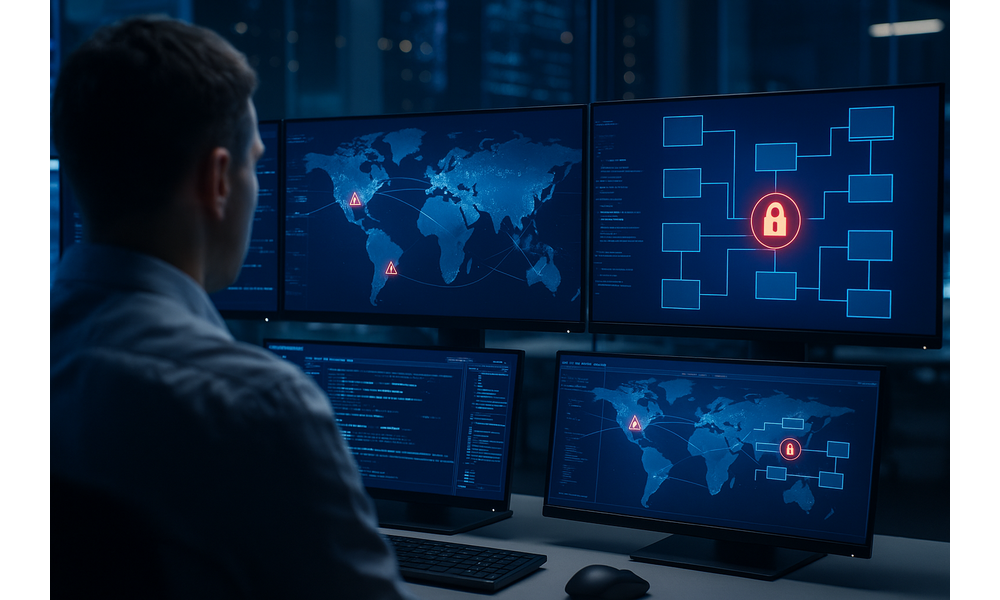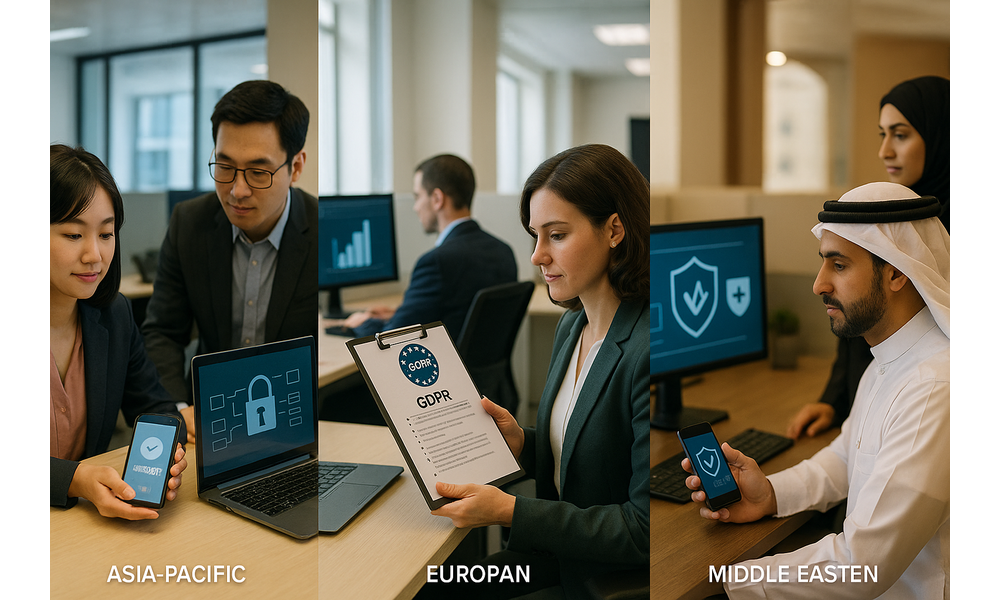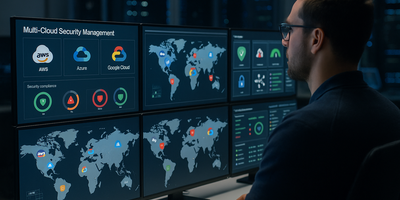In today's interconnected global economy, cybersecurity has become a critical concern for businesses operating across multiple regions. With cyber threats evolving at an unprecedented pace and data protection regulations varying by country, organizations face complex challenges in securing their digital infrastructure while maintaining operational efficiency.
At Aries Star Marketing OPC, we work with clients across Asia, Europe, and the Middle East to implement robust cybersecurity frameworks that address both universal and region-specific threats. This article outlines essential cybersecurity practices that global businesses should implement in 2025 to protect their assets and maintain compliance.
The Evolving Threat Landscape
The cybersecurity landscape has transformed dramatically in recent years, with several key trends emerging:

- AI-powered attacks: Cybercriminals are increasingly using artificial intelligence to automate and enhance their attack methodologies, making them more sophisticated and harder to detect.
- Supply chain vulnerabilities: Attacks targeting third-party vendors and partners have increased by 78% since 2023, creating new entry points to otherwise secure systems.
- Cross-border data threats: Organizations operating across multiple jurisdictions face unique challenges in protecting data that flows between different regulatory environments.
- Ransomware evolution: Ransomware attacks have become more targeted, with attackers conducting extensive reconnaissance before deploying malware specifically designed to exploit a company's vulnerabilities.
Essential Cybersecurity Strategies for Global Operations
1. Implement a Zero Trust Architecture
The traditional security perimeter has dissolved with the rise of remote work, cloud computing, and global operations. Zero Trust architecture operates on the principle of "never trust, always verify," requiring authentication and authorization for every user and device attempting to access resources, regardless of location.
For global businesses, implementing Zero Trust means:
- Verifying user identities with multi-factor authentication across all regions
- Applying least-privilege access controls to limit exposure
- Continuously monitoring and validating that all connections are secure and compliant with policy
- Implementing micro-segmentation to contain breaches within specific network segments
"Zero Trust isn't just a technology framework—it's a strategic approach that acknowledges the reality of today's borderless business operations. For our clients operating across Asia, Europe, and the Middle East, it provides consistent security regardless of where their employees or data reside."
2. Develop Region-Specific Compliance Frameworks
Data protection regulations vary significantly across regions, with frameworks like GDPR in Europe, PDPA in Singapore, PIPL in China, and various regulations in Middle Eastern countries. Global businesses must navigate this complex regulatory landscape while maintaining operational efficiency.

Key strategies include:
- Creating a comprehensive data map that identifies what data is collected, where it's stored, and how it flows across borders
- Implementing region-specific data handling protocols that address local requirements
- Establishing a global privacy framework that can be adapted to meet local regulations
- Conducting regular compliance audits across all operational regions
- Training employees on region-specific data protection requirements
3. Secure Your Global Cloud Infrastructure
Cloud services have enabled global operations, but they also introduce new security challenges. Organizations must implement robust cloud security measures that account for regional variations in data sovereignty and compliance requirements.
Effective cloud security for global operations includes:
- Implementing cloud security posture management (CSPM) tools to monitor configurations across all cloud environments
- Using cloud access security brokers (CASBs) to enforce security policies between users and cloud services
- Encrypting sensitive data both in transit and at rest, with region-specific key management
- Selecting cloud providers with regional data centers that comply with local regulations
- Implementing consistent security controls across multi-cloud and hybrid environments
4. Build a Global Security Operations Center (SOC)
A global Security Operations Center provides 24/7 monitoring and response capabilities across all regions where your business operates. This "follow-the-sun" model ensures that security incidents are addressed promptly, regardless of where or when they occur.

Key components of an effective global SOC include:
- Advanced security information and event management (SIEM) systems that aggregate and analyze logs from all global operations
- Threat intelligence feeds that provide insights into region-specific threats
- Automated response capabilities to address common threats without human intervention
- Clear escalation procedures that account for different time zones and regional teams
- Regular tabletop exercises that simulate attacks across different regions
5. Implement Supply Chain Risk Management
Global businesses typically work with vendors and partners across multiple countries, creating a complex supply chain that can introduce security vulnerabilities. Effective supply chain risk management is essential for protecting your organization from third-party breaches.
Best practices include:
- Conducting thorough security assessments of all vendors, with additional scrutiny for those handling sensitive data
- Including robust security requirements in all vendor contracts
- Implementing continuous monitoring of third-party access to your systems
- Developing incident response plans that address supply chain breaches
- Limiting vendor access to only the systems and data necessary for their function
Regional Cybersecurity Considerations
Asia-Pacific Considerations
The Asia-Pacific region presents unique cybersecurity challenges due to its diverse regulatory landscape and rapidly evolving threat environment. Organizations operating in this region should:
- Stay current with evolving data protection laws across different countries
- Implement strong controls for data localization requirements in countries like China, Vietnam, and Indonesia
- Address the growing threat of state-sponsored attacks in certain regions
- Develop strategies for securing rapidly expanding digital payment ecosystems
European Considerations
Europe has established some of the world's most stringent data protection regulations with GDPR. Businesses operating in Europe should:
- Maintain comprehensive data processing records
- Implement privacy by design in all systems and processes
- Establish clear procedures for handling data subject requests
- Address the complexities of post-Brexit data transfers between the UK and EU
Middle East Considerations
The Middle East has seen rapid development of cybersecurity regulations, with countries like the UAE and Saudi Arabia implementing comprehensive frameworks. Key considerations include:
- Addressing sector-specific regulations, particularly in finance and healthcare
- Implementing data localization requirements where applicable
- Developing strategies to address the region's high rate of mobile device usage
- Preparing for emerging regulations as digital transformation accelerates across the region

Building a Global Cybersecurity Culture
Technology alone cannot secure an organization. Creating a strong security culture across all global operations is essential for protecting against cyber threats. This includes:
- Developing security awareness training that addresses both universal and region-specific threats
- Adapting security communications to account for cultural differences
- Establishing clear security responsibilities for employees at all levels
- Creating incentives for good security practices
- Conducting regular phishing simulations and other security exercises
"The most sophisticated security technology can be undermined by a single employee who doesn't understand their role in protecting the organization. Building a global security culture requires understanding regional differences in work practices, communication styles, and threat awareness."
Conclusion: A Strategic Approach to Global Cybersecurity
As cyber threats continue to evolve and regulatory requirements become more complex, global businesses must take a strategic approach to cybersecurity. This means moving beyond tactical responses to individual threats and developing a comprehensive security framework that addresses the unique challenges of operating across multiple regions.
At Aries Star Marketing OPC, we help organizations develop and implement cybersecurity strategies that protect their digital assets while enabling global operations. By combining technical expertise with deep understanding of regional requirements, we ensure that our clients can operate securely in today's complex digital landscape.
For more information on how we can help your organization enhance its cybersecurity posture across global operations, contact our security team for a consultation.







12 Comments
David Wong
Excellent article! The section on regional considerations is particularly helpful for our company as we expand operations into Southeast Asia. Would love to see more specific guidance on navigating the differences between GDPR and APAC data protection laws.
Fatima Al-Mansouri
As someone working in cybersecurity in the UAE, I appreciate the Middle East-specific insights. The regulatory landscape here is evolving rapidly, and your point about sector-specific regulations is spot on. The financial sector in particular has seen significant new requirements in the past year.
Thomas Müller
The Zero Trust section provides good theoretical framework, but I'd be interested in hearing more about practical implementation challenges across different regions. We've found that cultural differences significantly impact how security policies are received and followed.